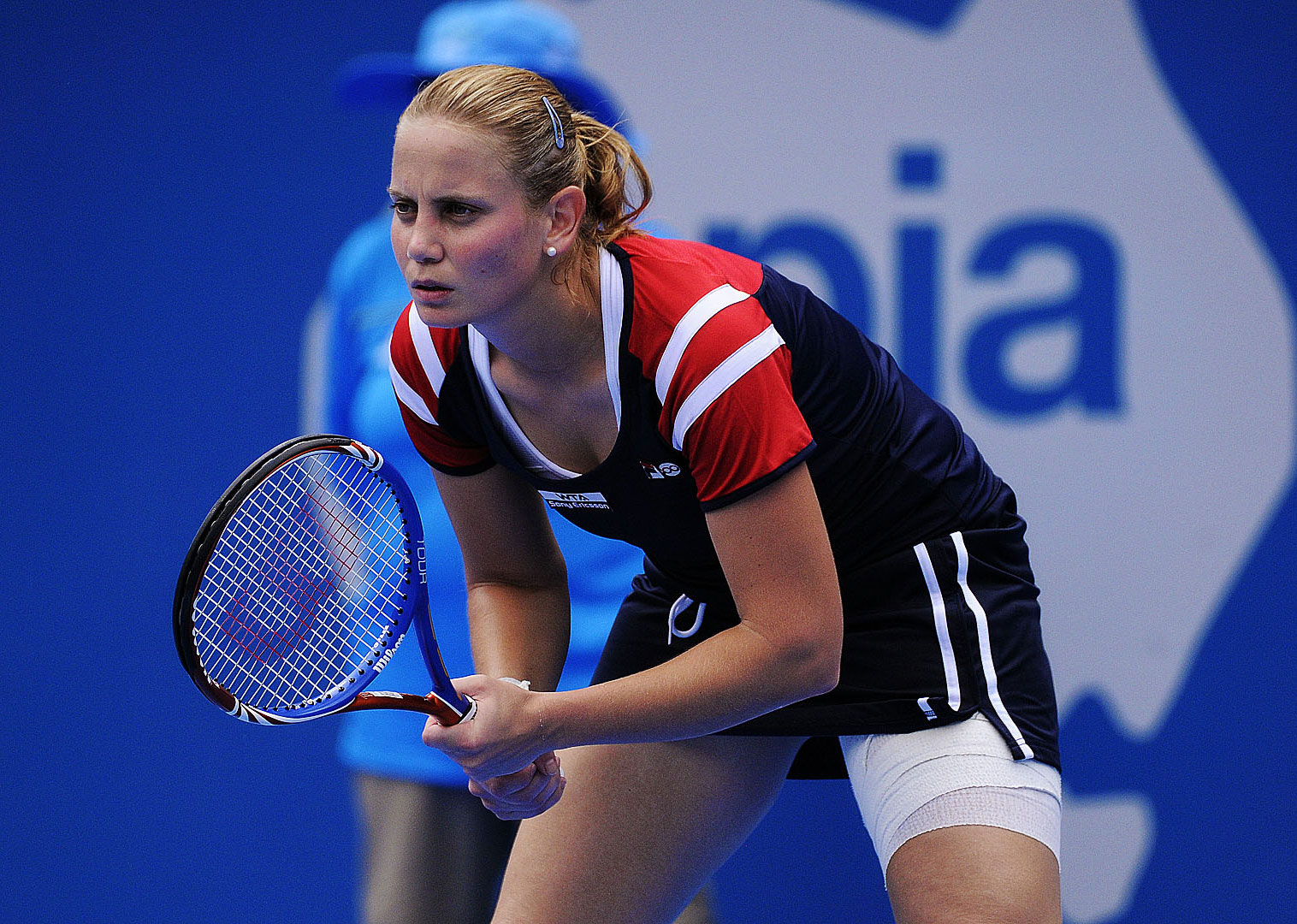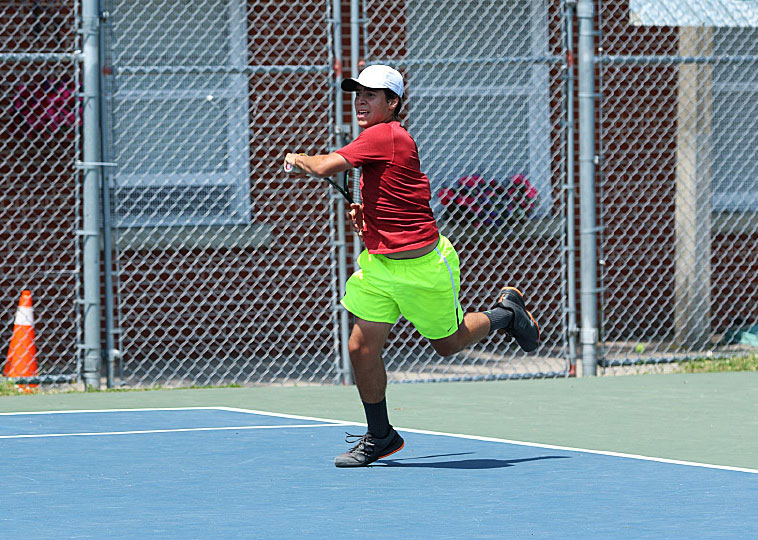

Are you one of the growing number of players wanting to get more competitive with your tennis? Do you want to move on from pick-up games to playing league or team matches, or even entering local or provincial events?
'The Competitive Edge' by lifelong player and coach Adrian Coles, features easy to digest tips and strategies to help keen recreational competitors play smarter. Improving stroke technique certainly helps but that requires a great deal of deliberate practice. A quicker way is to sharpen tactical skills whilst still using the strokes you've already got! He will cover topics often overlooked or even glossed over in on court instruction when hitting lots of balls is what is appreciated most.
This ONTENNIS exclusive series is a must-read for anyone who plays tennis at the recreational level and is interested in optimizing their match-play competitive experience. To access the other stories in the series, visit www.ontennis.ca.
Break Up Without Tears! Return Serve with Confidence!
When a match is close it may all come down to who can break serve! How can you go about returning well under pressure? Is there anything you can do at the business end of a set to give yourself the best chance of breaking?
Ideally you would reach this stage having developed a very clear idea of what your best return plays are, and what your opponent's go-to-serves are. Here are 5 strategies to help get a break up without tears!
Ensuring your shoulders are turned will give you room for a fuller swing
1. Observe The Server
Taking more than a cursory glance at the server's manner and technique can pay dividends later. Try to observe their body language, their mental state, patterns of behaviour, etc.; anything that helps you make an educated guess as to what kind of serve is coming.
Some examples:

Does the position of the ball toss give a clue as to the proposed direction? The best servers can hit all the spots with the same toss placement. Most of us have 'tells'.
Does your opponent look at the intended target spot before serving? Some players don't realize they do. According to Andre Agassi, he could tell where fellow Grand Slam winner Boris Becker was aiming by watching his facial expression. Boris pointed his tongue one way for a wide serve, another for a T serve!
What are their best serves? What are their least reliable? What are their safe go-to-serves? Make a mental note for both first and second serves! Is your opponent balanced and well recovered quickly after the serve?
Any repeatable patterns? In their placement, speed, direction? Do they have a different set of rituals when nervous? Most of us are unaware of our own habits.
2. Test The Server
Test their ability to hit different spots. Try to get them to expose their weaknesses and preferences. Change your receiving stance position and offer gaps. Stand further to the centre of the court and dare them to go wide. Stand wider and offer the gap for a 'T' serve. How do they respond? Maybe they don't even notice! What happened? Which spots are easier for them? Which are more difficult?
Stand closer and threaten to hit early. How do they react? Makes no difference? Or do they feel extra pressure? Do they serve more aggressively? Or get very tentative?
Serve and volley? Return a floating high ball down the middle to see if your opponent has a serve volley option.
3. Pick Your Best Return Spots
Reacting to pressure by trying to play your very best is more likely to result in overpress errors! You can't break serve unless you return the ball in court! But playing too safe, on the other hand, may not be enough to overcome a confident opponent and it reveals your own reaction to pressure!
Djokovic has a remarkable record of no unforced errors in tie breaks! His default return target off a forceful serve is 'deep centre', within a few feet of the baseline down the central corridor. This cuts down the angle for the server's next shot and serves to neutralize the server's advantage.
Off a weaker, shorter serve he will be aggressive, but to a big target, to set up his next shot! Avoid the trap of overpressing on a second serve. Stay away from the lines, give yourself a good margin for error.
Be aware of what is working well for you, and stay away from less reliable, more risky shot placements. Down the line returns, over the high part of the net, are for those who dream of making the day's highlight reel show!
4. Tweak Your Technique

What kind of mistakes are you making?
Returning the ball wide of the sideline too often? You are probably making contact with the ball a little late. Moving back to receive will give you more time. Making a more compact swing takes less time than a full swing.
Returning the ball too short? Hitting into the 'donut hole' (that circular area around the middle of the centre service line) invites your opponent to hit angled putaways or come to the net for volley winners.
Ensuring your shoulders are turned will give you room for a fuller swing, rather than just blocking or pushing the ball back short. Or aim higher over the net, which allows depth, if your opponent is not a serve and volley enthusiast!
Too many netted? Are you trying to keep the ball low to upset a serve volleyer? Hit a bit higher but hard straight at the incoming volley to challenge their reaction speed. If not facing a serve volleyer, then try hitting the return higher for depth and good net clearance, and slower for fewer errors with more time to recover for the next shot.
Too many long? Standing further back gives you a longer distance to hit into. Or you could try hitting less flat, with more topspin to bring the ball down into court.
5. See The Ball Sooner!
Pro players are able to return serves hit at over 120 miles per hour. Watch the receiver the next time a first serve hits the net. Chances are the receiver has turned their shoulders and has their racket cocked, ready to swing. They are well prepared to hit the ball before it would have bounced. How fast are we at preparing to return serve? Next time you play notice when the serve hits the net how far have you turned, how much has your racket arm moved. My guess would be not far enough. Try to watch the ball as the server makes contact. Is it moving to the left or the right? Try making the decision which way to turn your shoulders much sooner. Your goal is to be fully prepared as the oncoming ball bounces, or even before. The sooner you can prepare, the less rushed you will feel. Speed of movement is THE separator between players, at all levels.
In Conclusion
One sided contests are not very satisfying no matter which side you are on. It is the uncertainty of outcome that brings the excitement, the anticipation and the pressure. Learning to deal with, and even enjoy this pressure, will enhance your enjoyment of this fascinating and frustrating pastime! Unless you can break your opponent's serve, even in a tie break, you cannot win. So carefully study your opponent, notice patterns or tells. Be aware of what is working for you, and tweak what is not, and try to see the ball sooner to speed up preparation. I hope some of these things resonate with you, and if you have a tip or trick you would like to share please pass them on and return the favour.●